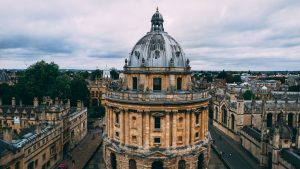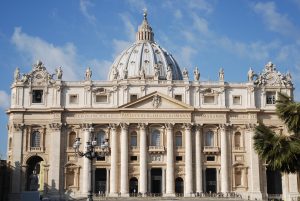Baroque Architecture
Originating in late 16th-century Rome, Baroque architecture followed the Renaissance period. It gained popularity when the Catholic Church was appealing to those with faith through architecture and art. Some famous examples include the Belvedere Palace in Vienna and the Cathedral of Santiago de Compostela in Spain.

Photo by Travis Robertson from Pexels
Baroque architecture was developed by Bernini and Carlo Maderno, who emphasised the use of contrasting colours, textures, and materials to heighten the building’s physical immediacy. Baroque architects discarded wood and used stone and brick to construct new buildings instead. For the exteriors, limestone and slate were commonly used, and for the interiors, grey and red granite.

Oxfordshire, United Kingdom. Photo by Chait Goli from Pexels.
Bernini was the pioneer of Baroque architecture in Rome; St. Peter’s Square, which is designed as a three-aisled Latin cross, was one of his greatest achievements. Another father of Baroque architecture is Carlo Maderno, who designed the St. Peter’s Basilica with a dome that is one of the largest in the world.

St. Peter’s Basilica, Rome.
Inspired by a combination of French and English Baroque architecture in the 17th and 18th centuries, Edwardian Baroque architecture spread in Australia. From H.P.C Ashworth and James Fawcett designing Flinders Street Station in Melbourne to Thomas Pye designing Land Administration Building in Brisbane, there are numerous buildings of Baroque architecture here in Australia.
Have you ever looked at Melbourne and wondered why things look the way they do? Learn more here.





